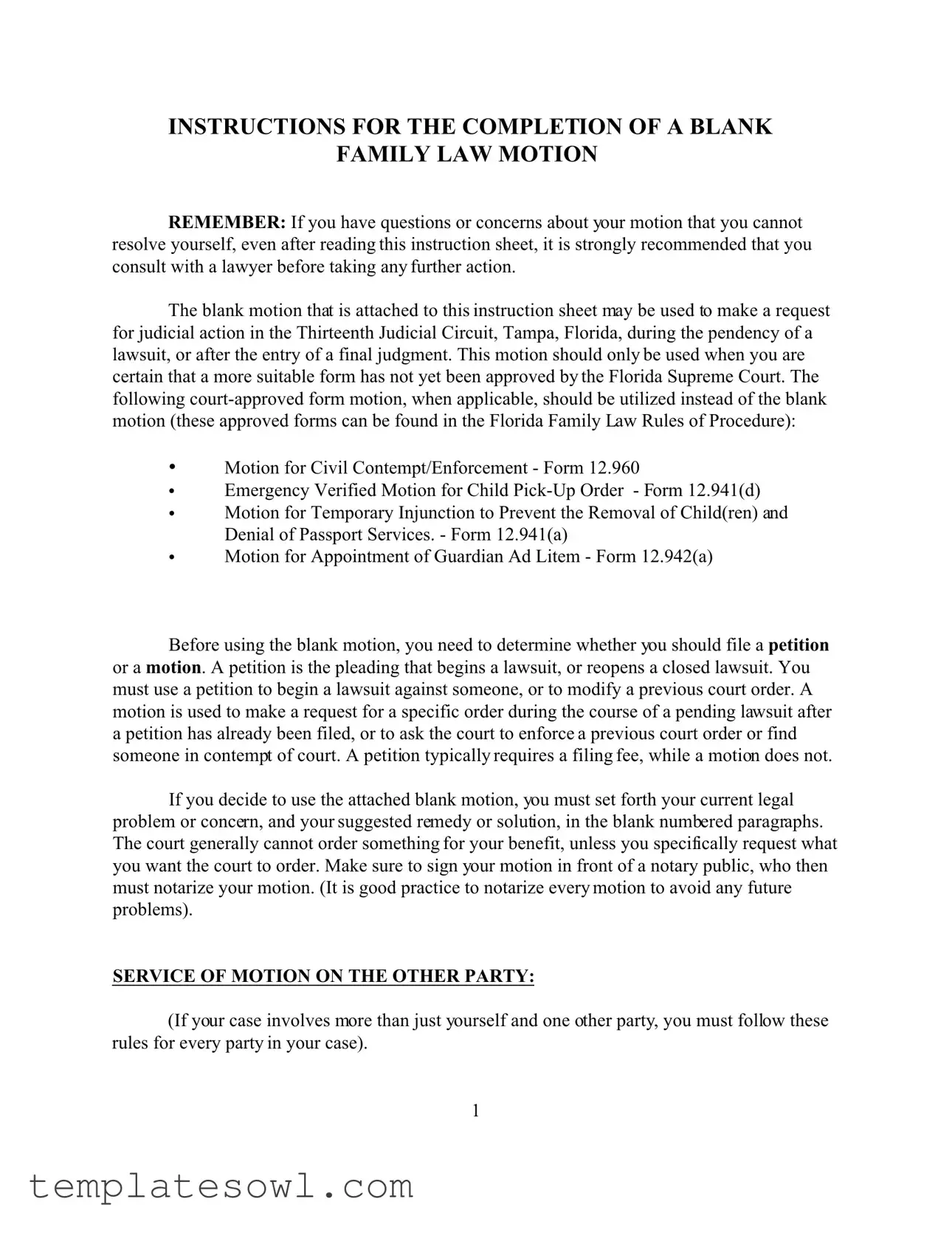What is the Motion Florida form used for?
The Motion Florida form is a legal document that individuals can use to request a specific action from the court in the Thirteenth Judicial Circuit in Tampa, Florida. This form is especially useful when you have an ongoing lawsuit or need to ask the court to enforce a previous order.
When should I use a motion instead of a petition?
A motion is used to make requests during an ongoing lawsuit, while a petition starts a lawsuit or reopens a closed one. If you are looking to change a previous court order or enforce an existing one, you should use a motion.
Do I need to pay a filing fee for a motion?
No, filing a motion typically does not require a fee. However, if you are starting a new lawsuit or modifying a previous court order, you will have to file a petition, which usually requires a fee.
What should I include in the motion?
You need to clearly outline your legal concern and suggest what action you want the court to take in the numbered paragraphs of the motion. Be specific about the relief you are seeking.
Why is it important to notarize my motion?
Notarizing your motion helps to verify your identity and adds credibility to the document. This step can prevent potential issues and ensure your motion is accepted by the court.
What are my responsibilities regarding the other party when filing a motion?
You must provide a copy of your motion to the other party at the same time you file it with the court. This can be done by mailing, faxing, or hand-delivering the motion. Be sure to fill out the “Certificate of Service” accordingly.
What if I don’t notify the other party about my motion?
If you file a motion without notifying the other party, it is considered an ex parte motion, meaning the judge can only rule on it without a hearing under specific circumstances. Generally, it’s best to inform the other party to ensure fair proceedings.
How do I schedule a hearing for my motion?
You must schedule the hearing after filing your motion. Contact the other party to agree on a convenient time. If you cannot agree, you may set the hearing on your own. However, provide at least five business days' notice to the other party unless your motion is urgent.
Where do I file my motion?
You can file your motion in person at 800 East Twiggs Street, room 101, Tampa, Florida. If you prefer to file by mail, send it to Clerk of the Court, P.O. Box 3450, Tampa, Florida 33601.
What should I do after filing my motion?
After filing your motion, you need to complete a “Notice of Hearing” form, file it with the court, and serve a copy to the other party. This ensures that all parties are aware of the scheduled hearing and can prepare accordingly.



